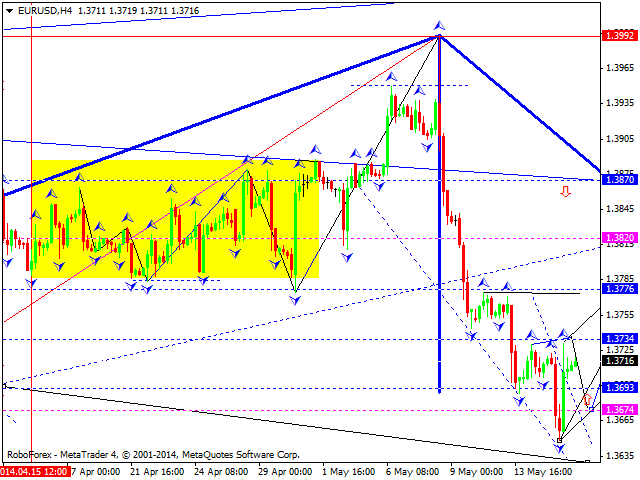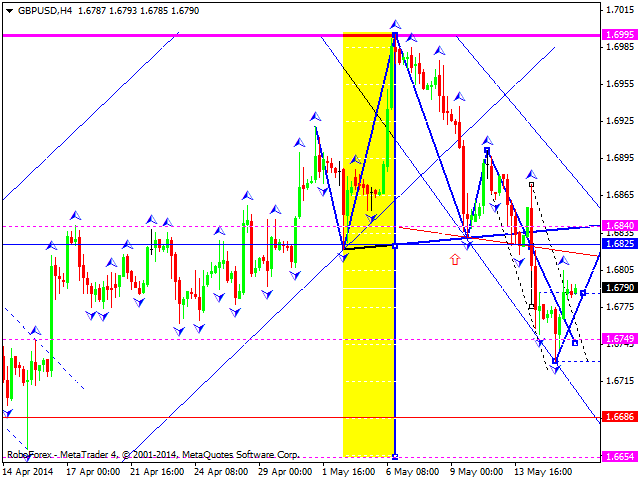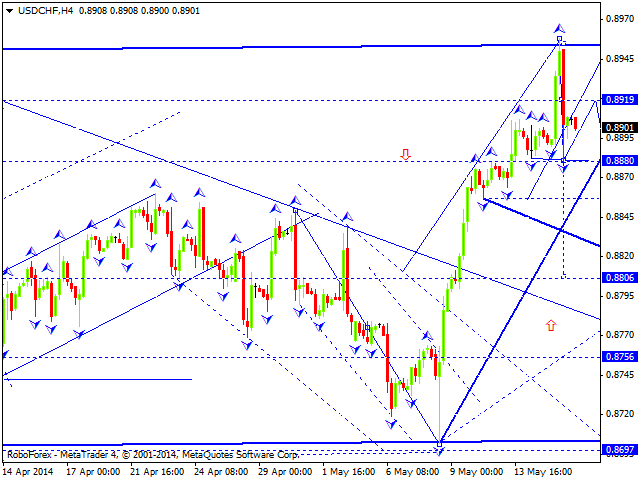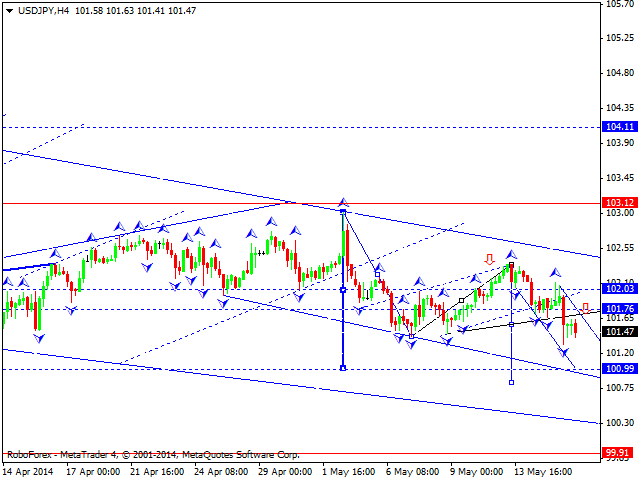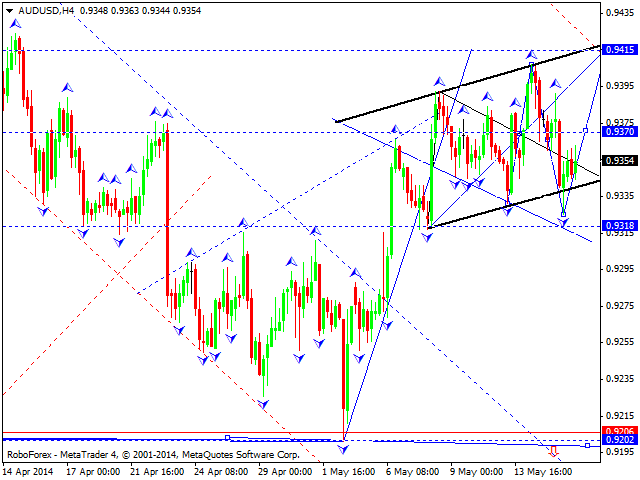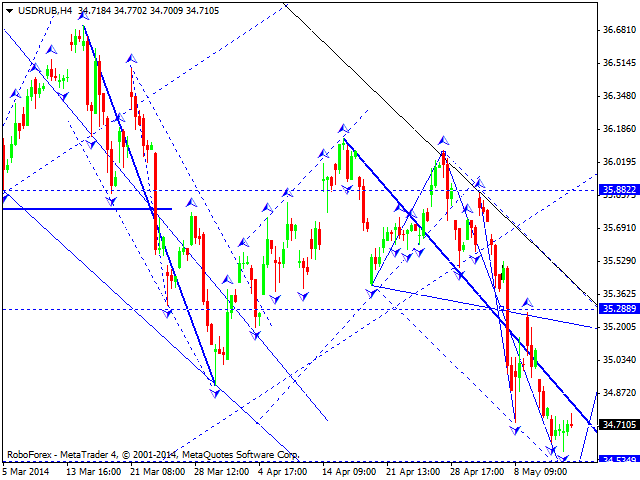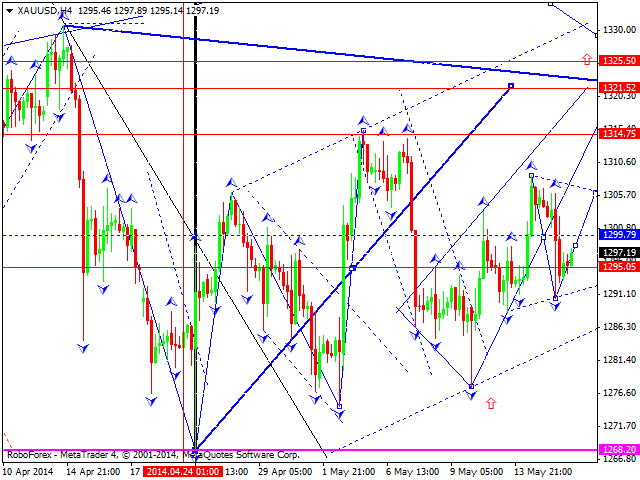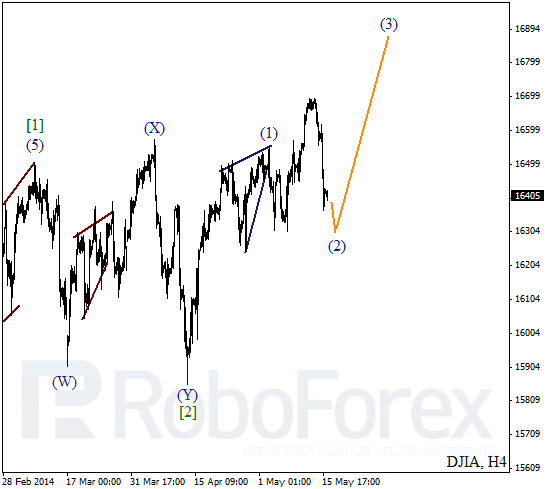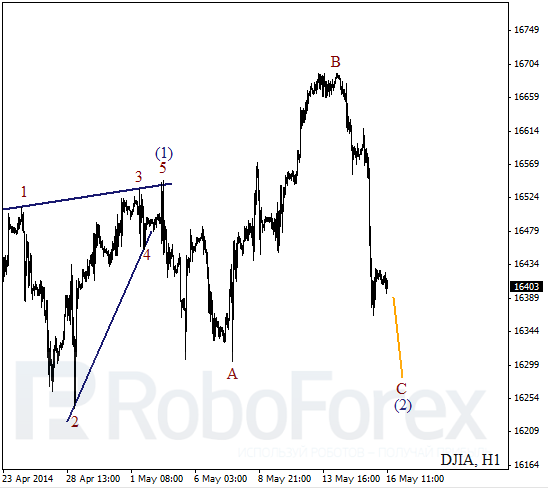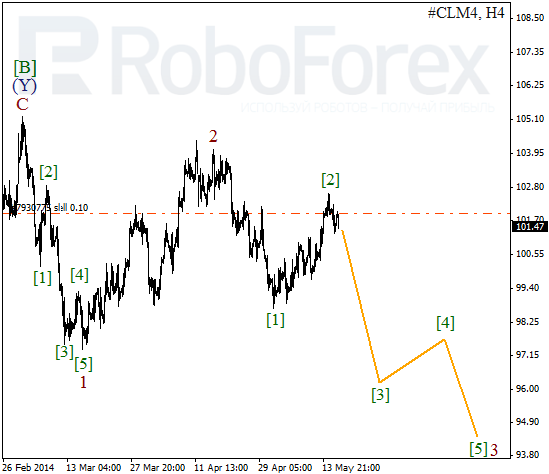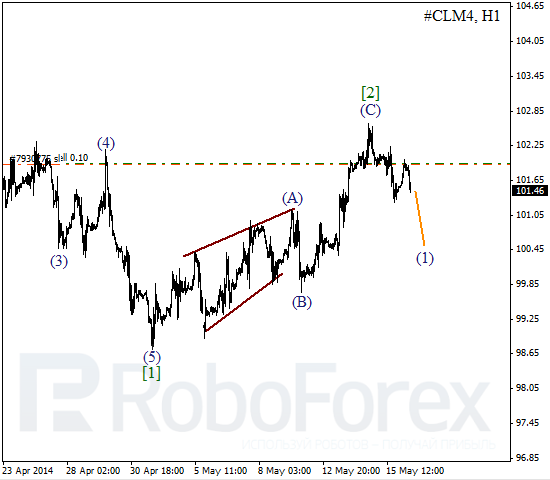Source: George S. Mack of The Life Sciences Report (5/15/14)
A downtrending market is troublesome for investors, but does present interesting opportunities through creation of lower valuations. Finding the right names in the wobbly life sciences environment requires a sharp eye and depth of experience. In this interview with The Life Sciences Report, J.P. Morgan Senior Biotechnology Analyst and Managing Director Geoff Meacham, a veteran analyst and cell biologist, brings eight important names to investors’ attention and explains why they are still growth stories.
The Life Sciences Report: Geoff, you’re a cell biologist by training. What have you brought from that early experience to your career as a sellside analyst?
Geoff Meacham: I did my doctoral thesis in the field of cystic fibrosis (CF), and some work in the cell biology field with heat shock proteins, which are molecular chaperones, and protein degradation pathways. I got lucky, because these are hot areas and mechanisms of action in drug development today.
TLSR: You have been a ranked analyst in the Institutional Investor poll since 2007, and ranked No. 2 since 2008. What makes that achievement even more impressive is that you covered a very mixed bag of biotech stocks, from large caps to microcaps. Given your experience and success, I wonder if you might describe how things have changed since you became an analyst?
GM: When I first started in 2000, we were in the genomics boom. A lot of companies were being valued in the near-term based on benefits they would derive from the sequencing of the human genome. It took five to seven years to see new and exciting drugs go into clinical development based on information from the genome. But if you look back and ask about those initial innovations, they actually came more from the diagnostics end of things.
Today, it’s a given that drugs are derisked from a safety perspective—particularly from potential liver and cardiac toxicity. Drugs today have much more epidemiology data from a market perspective, as well as much more data on targets within different disease pathways. There is a lot more knowledge in drug development today.
I believe the success rate in drug development has improved over the past several years. It’s the natural evolution following what we have learned in the last 10–15 years, and companies reflect that evolution. We had a boom of initial public offerings over the past two to three years, and these have been early-stage companies. Investors believe—and to some degree it looks realistic to me—that drugs being developed today have a higher probability of success, especially if they’re focused on things like orphan diseases, where there is a different risk/benefit hurdle.
TLSR: Geoff, back in the early to mid-2000s we heard a lot about how systems biology would be used in drug discovery and development. Whatever happened to systems biology?
GM: It’s interesting; it’s an integrative process. Right now the discovery and development process is contained within the systems biology process. It’s not a separate technology platform.
TLSR: Do you feel like drug developers today are drilling from the top down—from disease phenotype to the genotype, epigenotype or mutation status—to perform drug discovery?
GM: I do, yes. That is one of the principal drivers of drug discovery. In the orphan drug space, it’s natural now to identify certain mutations that lead to a disease. In the case of cancers, you can almost force a cell to go down a certain pathway to identify some target.
TLSR: It’s been more than two years since you and I last spoke. During that time, we’ve witnessed an extraordinary run-up in biotechnology stocks. Even with the very significant pullback that we’ve experienced since the end of February, we’re still seeing sizably increased valuations. Do you anticipate that we’re done with the secular bull market in biotech?
GM: If you look at larger-cap biotechs—let’s say the top 10 in terms of market valuation—most investors are valuing these stocks on a profit/earnings (P/E) basis, and on 2014 estimates. When we looked at initial guidance given by companies for 2014, there wasn’t a lot of upside to these stocks. When investors turn the page to 2015—and maybe that happens in the next three to six months—I think valuations of the larger-cap stocks, in general, will begin to look more reasonable. As a sector, I think you’ll be looking at a P/E multiple in the low to mid-teens, and that’s relative to the companies being able to grow, on average, about 25% on earnings and about 15% on revenue. I think that’s a very favorable profile for the larger caps.
TLSR: You’re very cautious right now, aren’t you?
GM: No, no. We’re coming out more bullish than other sellside shops on the larger caps. Now, for midcaps and the unprofitable kind of story stocks, it gets a little more complicated, simply because you have to be more creative with valuations.
We cover a company called Agios Pharmaceuticals Inc. (AGIO:NASDAQ), which we recently upgraded to Overweight. Agios had a valuation of more than a billion dollars as a pure preclinical company, without any human clinical data, but investors were willing to give it that kind of value. We like the technology platform, and the management team has a lot of experience. The science is very elegant, but we were waiting to see data from patients. When we got those data, we saw that the Agios platform translated for patients with leukemia. Within a couple of months of therapy, we saw very high complete response rates. We upgraded the stock because we feel more comfortable modeling a drug for a specific indication, as opposed to trying to model a platform.
Unfortunately, there are a lot of companies—some we cover and some we don’t—that have technology platforms that don’t have a lot of data in patients, yet a lot of value is assumed. That’s why I say it’s more complicated.
TLSR: I understand. But on the small- and micro-cap side, you tend to be cautious. Is that correct?
GM: I would say we are a bit more selective for those.
TLSR: Could we talk about some stocks? Would you go ahead and pick one?
GM: Our top pick, and it’s been our top pick for a while, is Gilead Sciences Inc. (GILD:NASDAQ), a large-cap biotech.
One of the bigger concerns in the biotech space overall this year has been that prescriptions for its hepatitis C (HCV) drug, Sovaldi (sofosbuvir), were strong, but the stock wasn’t doing anything. The drug was approved by the U.S. Food and Drug Administration (FDA) in early December, and it had breakthrough designation. I don’t recall, in my career, having seen that kind of demand relative to other drugs for HCV. If you contrast Gilead with Biogen Idec Inc. (BIIB:NASDAQ), which launched its relapsing multiple sclerosis (MS) drug Tecfidera (dimethyl fumarate) a year ago, Biogen’s stock was up dramatically with each week of new Tecfidera prescriptions. It was a big deal. But investors have been scratching their heads over Gilead, saying, “Well, if the stock doesn’t go up on the profound prescription data, then what is going to make it go up?” Each week brought more and more anxiety.
Then there was the catalyst that made people nervous, when Congressman Henry Waxman launched an inquiry into Sovaldi pricing, and also when payers like Express Scripts Holding Co., United Healthcare Services Inc., CVS Pharmacy and others made public comments about the cost of the therapy. Pricing has been a major area of concern for biotech investors for as long as I’ve been following this space. I thought the pricing headwinds would come from the orphan drug side, where prices are several hundred thousand dollars per year per patient, and not from Sovaldi, where the cost/benefit ratio is so dramatically skewed in favor of the drug. I wouldn’t have picked that battle, to be honest. Looking forward, we think there is a lot of upside to 2014 and 2015 Sovaldi forecasts, given strong Q1/14 results as well as the upcoming launch of the fixed-dose combo (Sovaldi + ledipasvir).
TLSR: Another name among large caps?
GM: We also like Vertex Pharmaceuticals Inc. (VRTX:NASDAQ)—a much smaller large cap than Gilead. This name has caused worry in the current biotech equity environment, with the recent shift in sentiment. I think a lot of investors are unwilling to take on a binary event in this environment—the appetite for that is very low now.
Vertex has two Phase 3 trials, called TRAFFIC and TRANSPORT, for a form of CF where patients are homozygous (have the same gene from both parents) for a mutation called delta F508. The data are due out literally any day now, with the latest date in July of this year. Some investors say this trial could fail. Well, yes, that’s true. I would say that the probability of the combination of Kalydeco (ivacaftor) + the experimental drug VX-809 (lumacaftor) not showing any signal of activity at all is less than 5%. Three different Phase 2 trials prove that Kalydeco plus a corrector, whether it’s VX-661 or VX-809, is efficacious. That’s why we like the risk/reward on Vertex at these current levels.
TLSR: Another name, please?
GM: Another would be Alexion Pharmaceuticals Inc. (ALXN:NASDAQ). It got to the point a few years ago where investors wanted to see a next indication for Soliris (eculizumab), which was approved for paroxysmal nocturnal hemoglobinuria (PNH) in 2007 and for atypical hemolytic uremic syndrome (aHUS) in September 2011. But there weren’t a lot of catalysts or data on the horizon for another indication. It is hard to retain a 30–40 P/E multiple on earnings when all a company is doing is executing, and when there are no major catalysts.
But now it’s officially different. Soliris is in Phase 3 studies for two new indications: relapsing neuromyelitis optica and refractory myasthenia gravis. Our thesis is also being driven by asfotase alfa for hypophosphatasia, another orphan indication. For me this changes the dialogue on Alexion, because it now has two hyper-growth assets. Investors are following a more diverse pipeline versus a single asset with multiple indications.
TLSR: You favor the kind of approach where there are multiple assets, don’t you?
GM: Yes. Look at Celgene Corp. (CELG:NASDAQ), for instance. The vast majority of the value of that stock years ago was in Revlimid (lenalidomide), for multiple myeloma. Now Celgene has Abraxane (paclitaxel protein-bound particles) being used in pancreatic cancer. It has Pomalyst (pomalidomide) for refractory multiple myeloma. It has a new drug called Otezla (apremilast) for rheumatoid and psoriatic arthritis. These are all marketed drugs, but Celgene also has a very diverse pipeline, which actually leads to a higher price multiple. Investors have more confidence in the company because if something happens competitively or intellectual property-wise to any of the core assets, the company has backups. That same concept will play out with respect to Alexion in a few years, if it has asfotase alpha and perhaps another asset in addition to Soliris—and if all of its indications play out.
TLSR: Geoff, you are following some smaller names, such as United Therapeutics Corp. (UTHR:NASDAQ) and Ironwood Pharmaceuticals Inc. (IRWD:NASDAQ). Could you address those?
GM: Let’s go to Ironwood first. We have an Overweight rating on this stock. Unfortunately, it’s been heavily shorted by a lot of hedge funds because every growth story needs a mystery, and there isn’t a lot of mystery with Ironwood. There isn’t a game-changing Phase 3 data set that’s imminent. So if you’re a hedge fund, and you have to pick a stock—one without any big catalysts on the horizon—this may be your stock for a short.
The structure of the shareholder and voting class of this stock is such that it would be very difficult for its marketing partner, Forest Laboratories Inc. (FRX:NYSE), set to be acquired by Actavis Plc (ACT:NYSE), to buy out Ironwood. No takeout is expected here. Granted, those share classes could be amended for a friendly deal, but at this point that’s not why people buy Ironwood. The company’s entire value is driven by demand for its drug Linzess (linaclotide), in the constipation market.
TLSR: Let me run this by you. A company called Synergy Pharmaceuticals Inc. (SGYP:NASDAQ) is starting two Phase 3 trials with its constipation drug candidate, plecanatide, which would be a competitor to Linzess. Does that put pressure on Ironwood?
GM: Our view is that it doesn’t, for a couple of reasons. The first is that the theoretical differentiation for the Synergy drug was that it would have a lower rate of diarrhea, which is one of the most common adverse events with Ironwood’s Linzess. The efficacy was presumed to be equal. What we know now, from Phase 2/3 trials, some released last year, is that for diarrhea, plecanatide looks largely similar. It is not differentiated in that respect. Its efficacy is not exactly equal. It’s going to be difficult to market a drug like plecanatide in a primary care setting when it isn’t any different from Linzess. Truly, the only way it could compete would be on price, and I’m not so sure that is going to be a big driver of adoption.
TLSR: Ironwood certainly has the first-mover advantage, and Synergy is probably looking forward at least 24 months before plecanatide could be on the market.
GM: I agree, though Synergy’s drug may take longer than 24 months because the company still has to do a large Phase 3 trial. Also, Ironwood has several thousand patients in a safety database, and Synergy has that to do as well.
TLSR: Geoff, you noted in a research report that Ironwood had begun a Phase 2a trial with its IW-3718 product for gastroesophageal reflux disease (GERD), with results expected in H1/15. Why do we need another product for GERD? The list of histamine-2 blockers and proton pump inhibitors on the market is long, and many of them are generics and over-the-counter products. Aren’t there combinations of these products that can deal with intractable GERD?
GM: The fact that a lot of gastrointestinal diseases and their symptoms vary so widely means the market is large enough to support several players. A company may need only minimal differentiation to achieve some market share. If a drug reduces the symptoms of GERD, but also possibly impacts things such as pain, you’ll have some adoption.
But the point you raise is a good one, which is that payers are going to require a step edit, and may require clinicians to go through generics and/or over-the-counter drugs, or both, before a prescription. Refractory GERD patients may have already tried a lot of the agents, which means there is a place for a drug like Ironwood’s.
TLSR: Would you go ahead and address United Therapeutics?
GM: We have United rated Neutral. A lot of investors ask us about companies with potentially negative catalysts, and our Neutral rating reflects that. We’re a little worried about United’s patent case. There is an ongoing litigation with Novartis AG (NVS:NYSE)/Sandoz for Remodulin (treprostinil) for pulmonary arterial hypertension (PAH). The two primary patents in question are expiring in 2014 and 2017. It’s hard to predict the outcome of a patent case.
However, this case does highlight the fact that, if Sandoz isn’t able to launch a generic this fall, there is a high probability that it may be able to launch in 2017. It is tough for a discounted cash flow model to work out when you’re talking about seeing generic pressure in H2/17.
Traditionally, in the pulmonary hypertension space, pricing hasn’t been a driver of adoption. United’s Adcirca (tadalafil) is still used for PAH despite the fact that sildenafil, which is the active ingredient in Viagra, is available as a generic. But at some point, I think that’s going to change with respect to the payer mix. So a lower price for generic sildenafil wasn’t enough to drive market share away from United’s Adcirca despite both agents having a very similar mechanism of action. It may not change physician behavior, but I think there may ultimately be a step therapy through generics first. That’s the risk to United’s core business.
TLSR: The court trial was supposed to go forward on May 1. Has it begun?
GM: We haven’t tracked that specifically. The company said on its recent earnings call that it is expecting this litigation to take a few months.
TLSR: It is interesting that United Therapeutics is up 18% since April 30, which is a significant short-term run-up for a company that has a $5 billion ($5B) market cap and patent litigation overhanging the stock. What gives?
GM: It’s a good question. I would say, in general, that investors are looking at what’s happening in specialty pharma and major pharma in terms of deals. Though it’s mostly a U.S. business, United Therapeutics does have a wholly owned and global franchise in a rare disease. There is competition, but there is differentiation within it. Perhaps some investors are looking at United as being a plug-and-play in terms of a takeout. The other piece, though, is that the company has reported some good upside and not a lot of downside either, to current estimates. The only risk here, beyond the patents, is competition.
TLSR: Any other companies that you wanted to mention?
GM: Yes. I’d like to mention is NPS Pharmaceuticals Inc. (NPSP:NASDAQ), which has really outperformed the NASDAQ Biotechnology Index (NBI). It went from a near-$40 stock to a low-$20 stock in short order over the last two months or so, and it’s still up 80% over a year ago.
The company owns two assets, one called Gattex (teduglutide [rDNA origin]) for short bowel syndrome, and one called Natpara (recombinant human parathyroid hormone [rhPTH(1-84)]), for hypoparathyroidism. It owns all the rights to both of them. Gattex has been approved in the U.S. for about a year. It is also approved in Europe and is just now launching there. Natpara is poised to face an FDA advisory panel in the middle part of this calendar year, with an expected launch potentially in the beginning of next year.
I look at this stock and think that, overall, expectations look low for Natpara, which represents a beatable consensus forecast for 2015 and 2016. Natpara has lower regulatory risk because it achieved its endpoint in a Phase 3, and there also is a safety database for this drug in a different indication, osteoporosis, which was done many years ago. In the near term, the company has talked about the weather impact and the Medicare Part D reimbursement impact, all for Q1/14, which is principally why the stock is down. Expectations are not high for Q1/14 performance for Gattex. I would say there is scarcity value in having two wholly owned orphan drugs in a company that just broke even in terms of profitability for Q4/13. Soon enough, NPS will be valued from an earnings perspective, and there is a lot of leverage in the model that can go right to the bottom line. I see NPS as a value name.
TLSR: Anything else?
GM: That’s all I have today. Thank you for the time.
TLSR: Thank you.
Geoff Meacham joined J.P.Morgan in 2004 as a senior biotechnology analyst. He previously was an equity analyst at UBS, following early-stage biotech and life science companies for about four years. Meacham has been ranked since 2007 in the Institutional Investor poll, including a No. 2 ranking since 2008. His research coverage spans large-cap biotech companies with a global reach as well as small, development-stage companies. He also worked in the pharmaceutical industry for two years in a research-and-development capacity, Meacham holds a Ph.D. in cell biology and a bachelor’s degree in biology/microbiology.
Want to read more Life Sciences Report interviews like this? Sign up for our free e-newsletter, and you’ll learn when new articles have been published. To see recent interviews with industry analysts and commentators, visit our Streetwise Interviews page.
DISCLOSURE:
1) George S. Mack conducted this interview for Streetwise Reports LLC, publisher of The Gold Report,The Energy Report, The Life Sciences Report and The Mining Report, and provides services to Streetwise Reports as an independent contractor. He owns, or his family owns, shares of the following companies mentioned in this interview: None.
2) The following companies mentioned in the interview are sponsors of Streetwise Reports: None. Streetwise Reports does not accept stock in exchange for its services.
3) Geoff Meacham: Please see J.P.Morgan disclosures. I was not paid by Streetwise Reports for participating in this interview. Comments and opinions expressed are my own comments and opinions. I had the opportunity to review the interview for accuracy as of the date of the interview and am responsible for the content of the interview.
4) Interviews are edited for clarity. Streetwise Reports does not make editorial comments or change experts’ statements without their consent.
5) The interview does not constitute investment advice. Each reader is encouraged to consult with his or her individual financial professional and any action a reader takes as a result of information presented here is his or her own responsibility. By opening this page, each reader accepts and agrees to Streetwise Reports’ terms of use and full legal disclaimer.
6) From time to time, Streetwise Reports LLC and its directors, officers, employees or members of their families, as well as persons interviewed for articles and interviews on the site, may have a long or short position in securities mentioned. Directors, officers, employees or members of their families are prohibited from making purchases and/or sales of those securities in the open market or otherwise during the up-to-four-week interval from the time of the interview until after it publishes.
Streetwise – The Life Sciences Report is Copyright © 2014 by Streetwise Reports LLC. All rights are reserved. Streetwise Reports LLC hereby grants an unrestricted license to use or disseminate this copyrighted material (i) only in whole (and always including this disclaimer), but (ii) never in part..
Streetwise Reports LLC does not guarantee the accuracy or thoroughness of the information reported.
Streetwise Reports LLC receives a fee from companies that are listed on the home page in the In This Issue section. Their sponsor pages may be considered advertising for the purposes of 18 U.S.C. 1734.
Participating companies provide the logos used in The Life Sciences Report. These logos are trademarks and are the property of the individual companies.
101 Second St., Suite 110
Petaluma, CA 94952
Tel.: (707) 981-8204
Fax: (707) 981-8998
Email: [email protected]
